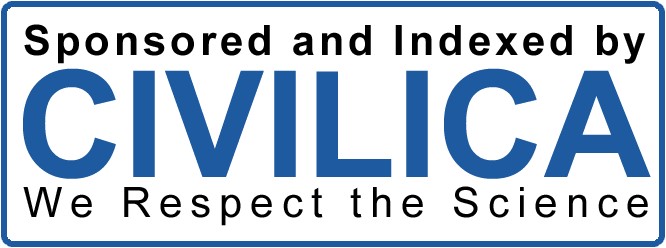بررسی اثربخشی درمان تحریک الکتریکی فراجمجمهای، درمان تحریک الکتریکی جمجمهای و درمان مبتنی بر پذیرش و تعهد بر خستگی مزمن زنان مبتلا به فایبرومایالژیا
کلمات کلیدی:
درمان تحریک الکتریکی فراجمجمهای, درمان تحریک الکتریکی جمجمهای, درمان مبتنی بر پذیرش و تعهد, خستگی مزمن, فایبرومایالژیاچکیده
هدف: هدف این مطالعه بررسی اثربخشی درمان تحریک الکتریکی فراجمجمهای، درمان تحریک الکتریکی جمجمهای و درمان مبتنی بر پذیرش و تعهد بر خستگی مزمن زنان مبتلا به فایبرومایالژیا بود.
مواد و روش: در این مطالعه نیمه آزمایشی، جامعهی آماری شامل کلیهی زنان مبتلا به فایبرومیالژیا مراجعهکننده به بیمارستان مهر شهرستان بهشهر بودند که در ششماههی اول سال ۱۴۰۳ به این بیمارستان مراجعه کردهاند که تعداد 48 نفر بیمار در چهار گروه مداخله درمان تحریک الکتریکی فراجمجمهای (12 نفر)، گروه مداخله درمان تحریک الکتریکی جمجمهای (12 نفر)، گروه مداخله درمان مبتنی بر پذیرش و تعهد (12 نفر) و گروه کنترل (12 نفر) قرار گرفتند. جهت گردآوری دادهها از پرسشنامه خستگی مزمن چالدر و همكاران (1993) استفاده شد و پروتکل درمان تحریک الکتریکی فراجمجمهای و جمجمهای در 12 جلسه 20 دقیقهای و مداخله درمان مبتنی بر پذیرش و تعهد در 10 جلسه 90 دقیقهای اجرا گردید. جهت تحلیل دادهها از آزمون تحلیل کوواریانس و آزمون بنفرونی با استفاده از نرمافزار آماری SPSS-22 استفاده شد.
یافتهها: نتایج نشان داد هر سه مداخله تحریک الکتریکی فراجمجمهای، تحریک الکتریکی جمجمهای و درمان مبتنی بر پذیرش و تعهد در کاهش خستگی زنان مبتلا به فیبرومایالژیا نسبت به گروه کنترل مؤثر بوده و تفاوت معناداری بین اثربخشی این مداخلات مشاهده نشد.
نتیجهگیری: در مجموع میتوان نتیجه گرفت که استفاده از هر یک از این مداخلات میتواند بهعنوان رویکردی مؤثر در کاهش خستگی مزمن بیماران مبتلا به فیبرومایالژیا به کار رود و انتخاب آنها میتواند بر اساس شرایط فردی، امکانات موجود و ترجیحات بیمار انجام گیرد. همچنین یافتهها بر اهمیت بهرهگیری از مداخلات غیرتهاجمی و روانشناختی در مدیریت علائم خستگی این بیماران تأکید دارد و میتواند مبنایی برای طراحی پروتکلهای درمانی تلفیقی در آینده با هدف ارتقای کیفیت زندگی این بیماران باشد.
دانلودها
مراجع
Bair, M. J., & Krebs, E. E. (2020). Fibromyalgia. Annals of Internal Medicine, 172(5), 33-48. https://doi.org/10.7326/AITC202003030
Bateman, L. (2023). Fibromyalgia and myalgic encephalomyelitis/chronic fatigue syndrome. Neurobiology of Brain Disorders, 559-573. https://doi.org/10.1016/B978-0-323-85654-6.00061-7
Bourke, J. H., Wodehouse, T., & White, P. D. (2021). Central sensitisation in chronic fatigue syndrome and fibromyalgia; a case control study. Journal of Psychosomatic, 150, 110624. https://doi.org/10.1016/j.jpsychores.2021.110624
Cojocaru, C. M., Popa, C. O., Schenk, A., Suciu, B. A., & Szasz, S. (2024). Cognitive-behavioral therapy and acceptance and commitment therapy for anxiety and depression in patients with fibromyalgia: a systematic review and meta-analysis. Med Pharm Rep, 97(1), 26-34. https://doi.org/10.15386/mpr-2661
Da Silva, R. D. M. F., Brunoni, A. R., Miguel, E. C., & Shavitt, R. G. (2019). Transcranial direct current stimulation for obsessive-compulsive disorder: patient selection and perspectives. Neuropsychiatric Disease and Treatment, 15, 2663. https://doi.org/10.2147/NDT.S184839
Dai, Y., Ghalib, Z., & Keefe, B. (2023). Long-Term Clinical Effectiveness Of A Digital Acceptance And Commitment Therapy For Fibromyalgia Management. The Journal of Pain, 24(4), 57-65. https://doi.org/10.1016/j.jpain.2023.02.192
De Benedittis, G. (2023). The Challenge of Fibromyalgia Efficacy of Hypnosis in Alleviating the Invisible Pain: A Narrative Review. Int J Clin Exp Hypn, 71(4), 276-296. https://doi.org/10.1080/00207144.2023.2247443
Di Carlo, M., Bianchi, B., & Salaffi, F. (2024). Fibromyalgia and the Difficult Synthesis. J Rheumatol, 51(6), 554-555. https://doi.org/10.3899/jrheum.2024-0321
Elijah, J., Powell, K., & Smith, M. A. (2022). The Efficacy of Capsaicin on Sleep Quality and Fatigue in Fibromyalgia. J Pain Palliat Care Pharmacother, 36(2), 112-116. https://doi.org/10.1080/15360288.2022.2063468
Elkins, G. (2023). Efficacy of Hypnosis Interventions: Fibromyalgia, Sleep, Oncology, Test Anxiety, and Beliefs. Int J Clin Exp Hypn, 71(4), 273-275. https://doi.org/10.1080/00207144.2023.2243785
Favretti, M., Iannuccelli, C., & Di Franco, M. (2023). Pain Biomarkers in Fibromyalgia Syndrome: Current Understanding and Future Directions. Int J Mol Sci, 24(13), 10443. https://doi.org/10.3390/ijms241310443
Flynn, D. (2023). Chronic Pain Syndromes: Fibromyalgia. Essent, 533-537. https://europepmc.org/article/med/37812528
García-López, H., Calle-Ortega, F., García-Robles, P., Del-Rey, R. R., Obrero-Gaitán, E., & Cortés-Pérez, I. (2024). Effectiveness of transcutaneous electrical nerve stimulation improves pain intensity, disability and quality of life in patients with fibromyalgia syndrome: a systematic review with meta-analysis. Disabil Rehabil, 21, 1-11. https://doi.org/10.1080/09638288.2024.2331069
Giorgi, V., Bazzichi, L., Batticciotto, A., Pellegrino, G., Di Franco, M., Sirotti, S., Atzeni, F., Alciati, A., Salaffi, F., & Sarzi, P. (2023). Fibromyalgia: one year in review. Clin Exp Rheumatol, 41(6), 1205-1213. https://doi.org/10.55563/clinexprheumatol/257e99
Lusicic, A., Schruers, K. R. J., Pallanti, S., & Castle, D. J. (2018). Transcranial magnetic stimulation in the treatment of obsessive-compulsive disorder: current perspectives. Neuropsychiatr Dis Treat, 14, 1721. https://doi.org/10.2147/NDT.S121140
Maddox, E. K., Massoni, S. C., Hoffart, C. M., & Takata, Y. (2023). Dietary Effects on Pain Symptoms in Patients with Fibromyalgia Syndrome: Systematic Review and Future Directions. Nutrients, 15(3), 716. https://doi.org/10.3390/nu15030716
Martino, G., Caputo, A., Vicario, C. M., Catalano, A., Schwarz, P., & Quattropani, M. C. (2020). The relationship between alexithymia and type 2 diabetes: a systematic review. Front Psychol, 11, 20-26. https://doi.org/10.3389/fpsyg.2020.02026
دانلود
چاپ شده
ارسال
بازنگری
پذیرش
شماره
نوع مقاله
مجوز
حق نشر 2025 Seyed Hasan Hashemi keneti (Author); Mohammad Taqi Badeleh Shamushaki; Javanshir Asadi, Arastoo Mirani (Author)

این پروژه تحت مجوز بین المللی Creative Commons Attribution-NonCommercial 4.0 می باشد.





